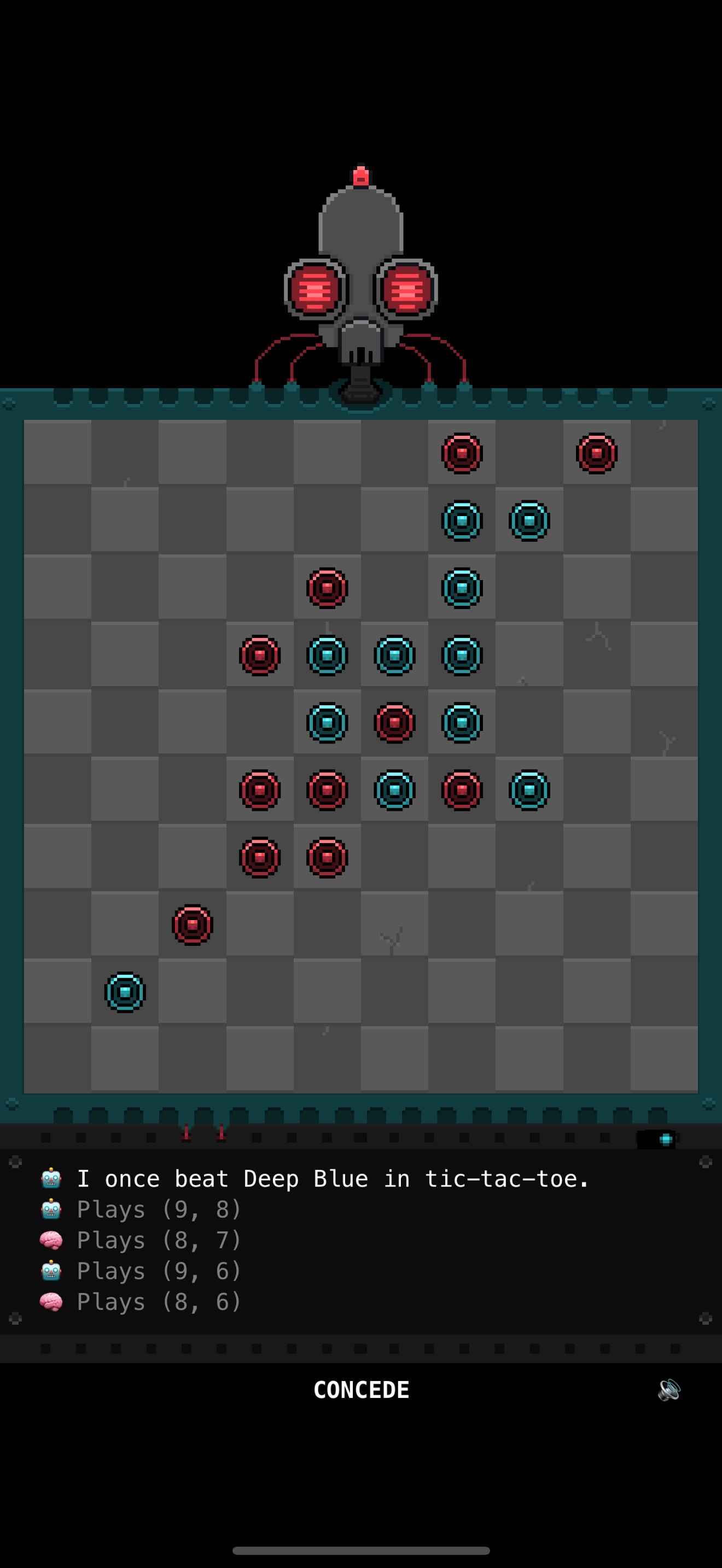Releasing Piskvor Prime: A Five-in-a-Row Game with Personality
Piskvor Prime is an iOS game I developed last month and succesfuly launched on appstore. TestFlight it or support me by buying it here.

The Beginning: Just an AI Engine
Piskvor Prime started as a hobby project — a simple AI engine for five-in-a-row (also known as Piskvorky in Czech). I was experimenting with heuristic-based move selection in minimax and had no intention of turning it into a game but once the AI started playing decent moves, I decided it would be a pity to shelve it.
From Minimax to Monte Carlo Tree Search: Progress Update
From Minimax to MCTS
Over the past few days, I’ve made some big strides in improving the AI for my game. What started as a basic minimax + heuristic approach quickly ran into limitations. The game is timing-sensitive and rewards long-term planning — not something minimax handles easily with shallow depth and static evaluations.
So, I switched gears and started working on a Monte Carlo Tree Search (MCTS) implementation — and I’m really happy with the progress.
From Minimax to Monte Carlo Tree Search: Smarter AI for Mars Colony
The Problem
I’ve been working on the AI for my game, which takes place on a toroidal grid with dynamic systems like population growth, energy networks, and resource management. It’s a complex environment with a lot of long-term planning involved — and that makes writing a good AI surprisingly tricky.
Up until now, I’ve been using a classic minimax algorithm with a handcrafted evaluation function. Here’s the setup:
- A minimax tree search (depth-limited)
- A fixed
evaluate()function that tries to guess how “good” a state is, based on:- Population size
- Energy yield
- Proximity to resources
- Habitat count
- Loops in pipe networks (bad!)
- And more…
While this approach works okay in simple cases, it really struggles in the kinds of situations my game cares most about — especially when timing and sequence of actions matter more than just static advantage.
Generating Graphics for a Turn-Based Game
We are currently developing a turn-based strategy game we tentativelly call Mars Colony with a friend. Here are the rules:
Let me explain you the rules first:
The game is a turn-based strategy where two players play against each other. Each player tries to connect energy resources (green circles with R) to habitats (circles labeled with P) using pipes (the thick lines).
Each habitat has a certain population (the number that appears after P). The goal of the game is to get a total population of 30 before your oponent and not run out of energy.